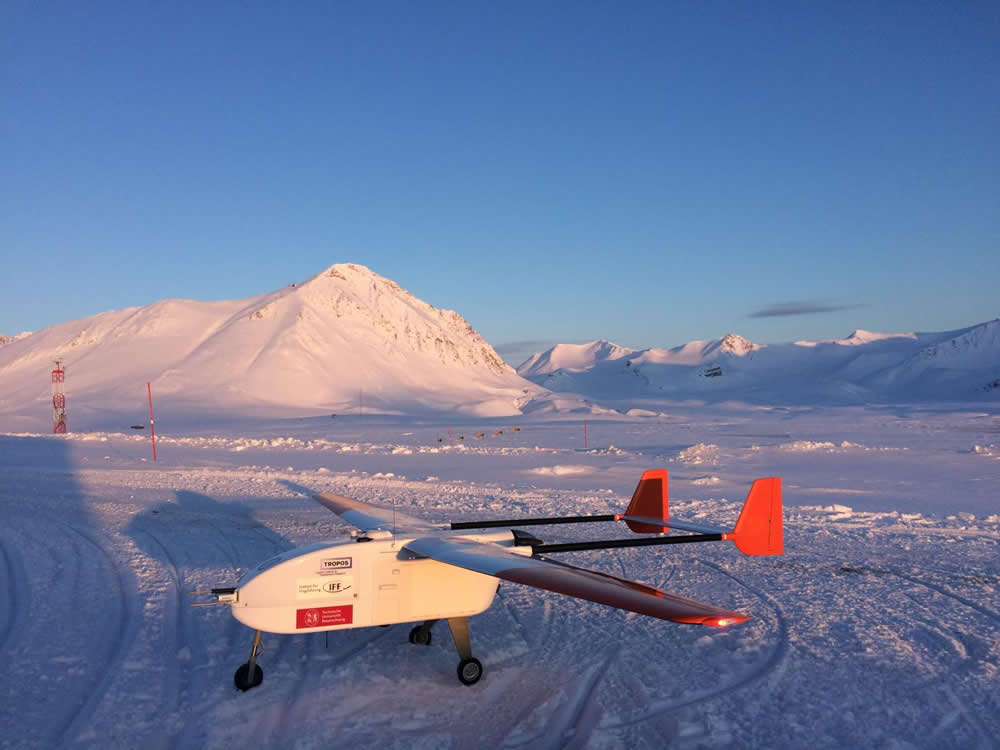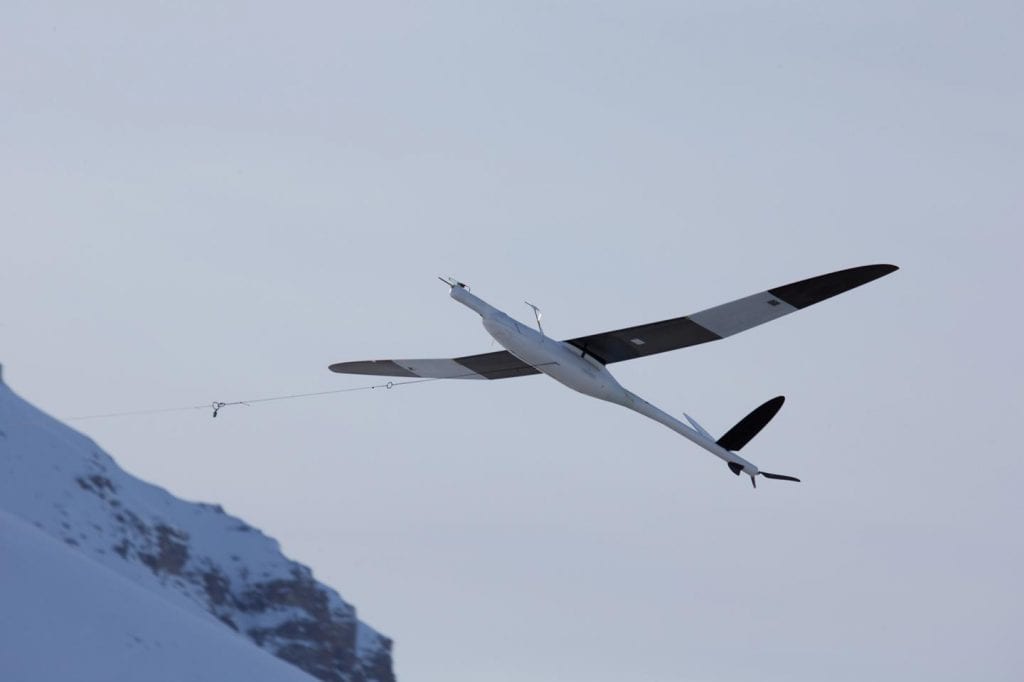News
Drones Help Scientists Study Arctic Particle Formation, Climate Change
Unmanned aerial vehicles (UAV), commonly known as a drones, can help in the study of earth’s atmosphere and the causes of climate change in the Arctic as they provide insight into near-surface layers of the air that are not detected by traditional measurement stations.
This is the conclusion of a German research team in a recent project at Spitsbergen, the largest and only permanently populated island of the Svalbard archipelago in northern Norway. It was possible to observe the formation of new particles in the air, which can later become clouds and influence climate change. The research is published in the open access journal, Atmospheric Chemistry and Physics.
This project ran until the end of May and was a joint venture between scientists from the Technical University of Braunschweig, the Leibniz Institute for Tropospheric Research Leipzig and the Eberhard-Karls University of Tübingen.
The Arctic has increasingly become a focus for climate research due to the fact that the impacts observed are much stronger than anywhere else on earth. Also remains something of a mystery as to why Arctic warming is more than twice as strong as experienced in other regions of the planet.
It seems the major factor of complex interactions between atmosphere, sea ice and ocean are difficult to quantify and then present in models, and in order to improve the understanding of the specific processes and interactions, more measurements were needed to be done at the site.
To date the provision of the necessary parameters for analysis and modelling have relied on a few continuously measuring stations and mobile measurements involving ships and aircraft to come up with a needed database
The scientific team have been performing measurements with unmanned flight systems since mid-April in Ny-Ålesund on Spitsbergen; the project is funded by the German Research Foundation (DFG) and entitled “Investigations into the small-scale vertical and horizontal variability of the atmospheric boundary layer aerosol with unmanned aerial systems”.
The scientists say they have investigated in particular ‘the correlation between small-scale air turbulence and the formation of the smallest airborne aerosol particles that can form from gases’. It appears that such small particles can grow and then scatter light and also influence the formation of clouds, and they play a major role in the climate.
The first results demonstrate different scenarios leading to the formation of new particles in the atmosphere: either the new formation takes place simultaneously in all investigated air layers between ground and 850 meters height or it begins in a certain air layer and continues from there.
This is an important finding for all the scientists involved as such results could not be seen with data from the fixed measuring stations in Ny-Ålesund and the nearby Zeppelin Mountain, which have been in continuous operation for many years.
Dr. Astrid Lampert of the Technical University of Braunschweig, who coordinated the measurement campaign, says that the measurements made by the UAVs represent a connection between the measurements at various sites in Ny-Ålesund and on the adjacent Zeppelin Mountain and thus close a knowledge gap on the distribution and transport processes in the atmosphere.
This measurement initiative is the third major study using ALADINA (Application of Light-weight Aircraft for Detecting IN-situ Aerosol), an Unmanned Aerial Vehicle (UAV) of the type “Carolo P360”, which was developed at the Institute of Aerospace Systems at Braunschweig Technical University, Germany. ALADINA has a wingspan of 3.6 metres, weighs 25 kilograms and is able to transport up to 3 kilograms of payload; it has a battery which enables it to fly for up to 40 minutes and a speed of up to and over 100 kilometres per hour. The UAV has a special feature in that it is equipped with custom-made particle measuring devices, miniaturized at the Leibniz Institute for Tropospheric Research in Leipzig. This makes it perfect for ALADINA as commercially available particle measuring devices are just too large and heavy.

ALADINA in front of Mount Zeppelin near Ny-Ålesund. CREDIT Konrad Bärfuss, TU Braunschweig
The concept has already been used several times in Germany – at the TROPOS measurement station Melpitz near Torgau and the University of Tübingen also used a MASC (Multi-purpose Airborne Sensor Carrier) UAS as part of its Spitsbergen campaign.

MASC during take-off for a measurement flight. Credit Alexander Peuker, TU Braunschweig
Such UAVs are specialized in the high-resolution measurement of atmospheric turbulence and turbulent transport of energy and impulses, and turbulence is an important process in particle formation processes. The MASC drone has a flight time of one and a half hours in the Arctic and these models are increasingly being used in wind energy research in Germany.
To further understand the various processes that can induce particle formation, a detailed analysis of the measurement data is now called for and that will the next task for the team in the coming months.
This project is supported by the Alfred Wegener Institute, the Helmholtz Centre for Polar and Marine Research which also operates the French-German research base AWIPEV in Ny-Ålesund.
Citation: Altstädter, B., Platis, A., Jähn, M., Baars, H., Lückerath, J., Held, A., Lampert, A., Bange, J., Hermann, M., and Wehner, B.: Airborne observations of newly formed boundary layer aerosol particles under cloudy conditions, Atmos. Chem. Phys. Discuss., https://doi.org/10.5194/acp-2017-1133, in review, 2018.























